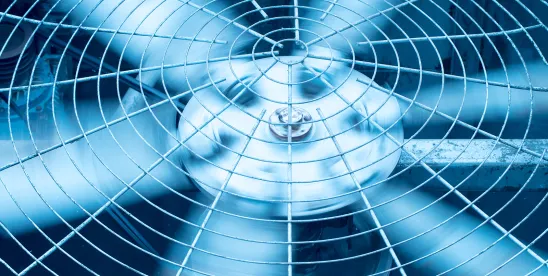In the wake of seven workers dying from heat illness indoors between 2010 and 2017, Cal/OSHA began pushing for rules obligating employers to provide indoor heat safety measures. On June 21, 2024, the Cal/OSHA Standards Board adopted a new Standard to Protect Workers from Indoor Heat. This new rule applies to any indoor workplace in which the temperature or heat index reaches 82°F, including warehouses, restaurants, and manufacturing plants. Cal/OSHA is seeking to fast-track the rule for expedited approval with the California Office of Administrative Law. If approved, the rule could take effect immediately.
The new rule largely parallels California’s existing regulations concerning Heat Illness Prevention in Outdoor Places of Employment, with a few important distinctions. Similar to an Outdoor Heat Illness Prevention Plans, employers would be required to develop and implement a written Indoor Heat Illness Prevention Plan, and provide training on the Plan to all affected workers and supervisors. In addition, the following key requirements would apply to indoor workplaces under the rule:
- PROVIDING COOL-DOWN AREAS: Employers must provide access to at least one cool-down area that is: 1) kept at a temperature lower than 82°F; 2) shielded from direct sunlight and other high-radiant heat sources; 3) open to air or provided ventilation or cooling; 4) located as close as possible to work areas; and 5) large enough for all workers on rest or meals breaks to sit comfortably. (For outdoor workplaces, shade must be present when temperatures are greater than 80°F.)
- ADOPTING COOL-DOWN MEASURES: Employers must provide preventative cool-down rest periods, and provide fresh, cool drinking water located as close as possible to work and cool-down areas.
- INSTALLING TEMPERATURE CONTROL MEASURES: Employers must keep indoor temperatures below 87°F—or 82°F for workers in “high-radiant heat areas” or wearing clothing that restricts heat removal—by using “feasible engineering controls” such as air conditioning or cooling fans. If engineering controls are insufficient to meet the temperature threshold, employers must incorporate “administrative controls” such as adjusting work schedules and requiring mandatory breaks in cooler environments. If administrative controls fail to minimize the risk of heat illness, employers must provide personal heat-protective equipment to workers.
- CONDUCTING OBSERVATION: Employers must provide close observation of (a) new or newly assigned workers during a 14-day acclimation period, and (b) all workers during heat waves if there are no effective engineering controls in the workplace.
- MEASURING TEMPERATURE: If the temperature or heat index reaches 87°F—or 82°F if employees are working in “high-radiant heat areas” or wearing clothing which restricts heat removal—employers must measure the temperature and heat index, and record whichever is greater.
Incidental or brief exposure (less than 15 minutes) to inside temperatures between 82°F and 95°F would not subject an employer to the rule, nor would employers be responsible for indoor heat protection in locations where employees performed remote work. Additional resources and guidance concerning the new indoor requirements can be found here: Cal/OSHA Heat Illness Prevention Guidance and Resources.
Cal/OSHA reports that violations of the Outdoor Heat Illness Prevention Standard consistently ranks among the Top 10 Most Frequently Cited Standards every year. Moreover, the CDC reports that approximately 1,220 people in the United States are killed by extreme heat every year. By being prepared to institute an Indoor Heat Illness Prevention Plan and take basic measures to comply with this new rule, employers can reduce the incidence of heat related deaths and illnesses in the workplace.
Natashja Atherton, 2024 summer associate in Greenberg Traurig’s Los Angeles office, contributed to this article.



 />i
/>i

